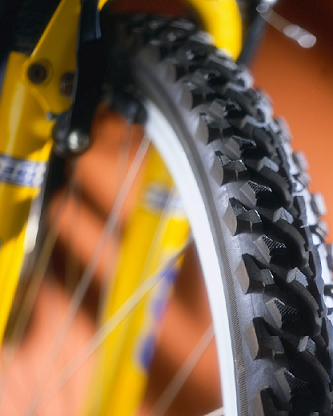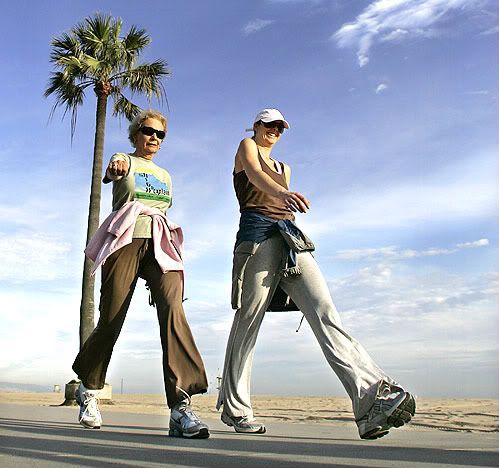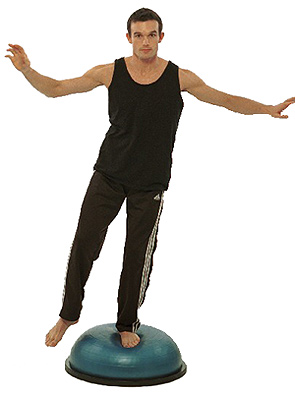 I prefer not to use the 'E' word, you know the one. The one that means you have to get up off the sofa and do somthing, besides check out the pantry or the inside of the fridge.
I prefer not to use the 'E' word, you know the one. The one that means you have to get up off the sofa and do somthing, besides check out the pantry or the inside of the fridge.
I prefer, instead, the 'activity' word. It doesn't seem like so much work! Why can't we just have fun! You don't just have to join the gym to get "movin".
In this section, I'll share some other info about moving on to success...have fun, will ya!
Life is good! Find something you like to do that gets you motivated to 'move'.
Yes you can!
i'm a squiggly, what about you?
 There is one thing about a "squiggle" that is true to form, it often changes and goes off in a variety of different directions!
There is one thing about a "squiggle" that is true to form, it often changes and goes off in a variety of different directions!
Ok, you ask... What is a squiggly?
If you attended the local Miles Surgical Weight Loss Surgery Support Group meeting this month, you know what a "squiggly" is! We talked about fitness personalities and how people have different and distinct personality types when it comes to exercise plans and activities.
I'm not being rude when I say that some folks are squares, and I'm not name calling when I say that some folks are circles and rectangles, and some are triangles and myself...I'm a squiggly.
As a matter of fact I don't even like the word exercise, I prefer to use the word "activity". The shape that best describes my fitness personality: squiggly.
According to Linda Shelton, a fitness expert who spoke at last year's American College of Sports Medicine's Health and Fitness Summit, finds that everyone has a fitness personality and has their own exercise needs and preferences.
Here is a breakdown on the five categories of exercise personalities.
First, there are squares. These folks thrive on routine and if you're a square, you probably have a rigid routine at the gym. These rigid schedulers often hit plateaus. If this sounds like you, try to take baby steps toward new activities to switch up your routine and give a little turn to your old program.
Then their are rectangles. These folks are a little more flexible than squares, but still prefer order and routine. Group exercise is their game and the love social interaction. Rectangles could mix it up a little with joining a fitness club, hiking or running groups.
Triangles are the competitive and driven sort. They are task-oriented and thrive on repetition and monitoring their progress and successes. Triangles could benefit by having exercise goals and Shelton suggest working out with an equally competitive partner or train with a specific goal in mind such as a mini-triathlon or a half-marathon.
Next are the circles. The social butterflies of the fitness world. These are emotionally driven and the most common type. Spontaneous and social round out this group and would never think of exercising alone but prefer a trainer or a group. Beware of spending too much time socializing than working out...have fun circles!
Next, one I can understand, squiggles. That's me alright! Squiggles are the most outgoing and lest structured of all. Woops! This group is motivated by pleasure and hate routine. These folks like varied exercise activities and seek new activities to maintain interest.
"Knowing your fitness personality," says Shelton, "and what your needs are and what you personally respond to is going to help someone like exercise, engage in it and reduce attrition and increase compliance because they are doing something that suits how they think and how they are."
So find out what shape you're in and go have fun expressing your exercise personality...yes you can, you have many more miles to go!
interval walking

I have discovered a new exciting walking routine, interval walking. Interval walking involves faster walking periods followed by recovery or resting walks. Fast intervals walking can be faster than your normal pace. Start each interval workout starts with a 10-minute warm-up that includes strolling and stretching, this time can be slower than your steady walking pace.
Every faster interval you do benefits your body more than ordinary walking. As you walk faster, your body responds with increased heart beats, indicating a higher demand for oxygen. That strengthens your heart and increases your blood flow. Your muscles work harder and develop new muscle fiber. You burn calories faster and boost your fitness by teaching your body to hold a faster pace.
Here's how: Fast walking intervals are followed by slower paced walking intervals at a steady stroll. This is called your "recovery interval." Walk slowly, allowing your breathing to return to normal, and then speed up for a fast interval. The recovery interval should be about twice as long as your faster walking interval. Repeat this pattern as often as you like.
After completing your interval walking workout, cool down for about 10 minutes and stretch your calves, shin muscles, hamstrings, quadriceps and lower back.
If you're interested in walking together, send me an email to find out times. I walk almost everyday at the Loop at Wrightville Beach, morning preferred, always on Saturday. See ya there! Yes, you can, you have many more miles to go!
steady as we go

Our sense of balance is controlled by a combination of three senses: equilibrioception (determined by the vestibular system in our inner ear, which detects acceleration and rotational movement), proprioception (which gives you the ability to sense the relative positions of your body parts) and vision.
While it's possible to balance while relying on just your equilibrioceptive and proprioceptive senses, adding a third sense, vision, makes it much easier for the average person.
Here is an fun test, try standing on a BOSU® ball, balancing with both feet on the ball. The BOSU® acronym stands for “Both Sides Utilized.” Balancing on the ball works your core muscle strength and your balance.
After you find your balance, then try it with your eyes closed. A little harder isn't it! It’s amazing that you instantly lose your balance. In order to stay balanced with our eyes closed, we must retrain our mind to refocus from the external visuals to an internal mindset focus.
Weight loss surgery is about balance, too. Balancing your diet, exercise and mindset or your total person, mind, emotions and spiritual along with the physical. If our focus gets out of balance we tend to lose our stability in other areas. We, too, must learn to shift our focus from the physical to other areas that can cause us to become a little lopsided.
Trainers say vision is not enough to keep you stable on uneven ground. We must develop other senses to keep us steady. So it is in life...
So today, I invite you to stay focused on your goal and overall objective for wanting to lose weight. So while you are making decisions to be active, choosing what you will eat, along with improving relationships, keep those areas of purpose in the right “position”, focus on what it is you want and you will begin to “accelerate” towards your dreams.
Let’s do our best to focus on bringing our entire self into proper balance …stay tuned for more…yes, you can, you have many more miles to go.
problem with your coccyx?
 My what?
My what?
Coccyx.
That is your tail bone.
I thought surely I had a growth or some severe malady with my tail bone after I lost weight. I went to several doctors but after having x-rays they assured me I had no abnormal growth or problems.
I was sent home to sit on a doughnut for a few months. Well, I guess if I can't eat them I might as well sit on them! No...I mean a pillow with a hole in it. Well, after months of carrying that embarrassing pillow around where ever I went, I was still in severe pain.
Then one day while walking with weight loss surgery friend, I mentioned the issue. As it turned out she had the same problem herself. She referred me to a physical therapist and within a few weeks...voila...no more pain.
Part of my basic therapy was"pilates" to strengthen the muscles around my tail bone. I discovered that since weight loss, my posture and the muscles I used in my normal routine had changed. Having weak muscles around my tail bone or coccyx had caused my tail bone to be have too much movement and become irritated.
Now, not only do I have a completely healed coccyx, I am enjoying pilates and I can even balance on my tail bone. Maybe that's more than you wanted to know...but here is something you should know...
Pilates is strength training for your body's core muscles around the spine. It is defined as a series of non-impact exercises to develop strength, flexibility, balance. Poor balance, combined with loss of muscular strength in the legs, are why falls in the elderly are so common. I maybe getting older but I'm getting stronger...thanks to pilates and weight loss surgery.
Moral of the story...having a problem with your coccyx is a pain in the .... tail bone...throw out all the doughnuts...enroll in a pilates class and stay healthy.
Yes you can, you have many more miles to go!
my personal “big loser” opinion
 Ever watch “The Biggest Loser”? It’s a great idea and fun to watch. I think that having a personal trainer is a really good idea. One of my personal dreams would be to work with Michael Thurmond, just once. Michael was one of the first trainers on “The Biggest Loser”. They do focus on diet as well as exercise and making activity fun and rewarding. So what is the catch? It’s TELEVISION…it’s DRAMA… and it’s UNREALISTIC.
Ever watch “The Biggest Loser”? It’s a great idea and fun to watch. I think that having a personal trainer is a really good idea. One of my personal dreams would be to work with Michael Thurmond, just once. Michael was one of the first trainers on “The Biggest Loser”. They do focus on diet as well as exercise and making activity fun and rewarding. So what is the catch? It’s TELEVISION…it’s DRAMA… and it’s UNREALISTIC.
I’m excited for every participant on the show. They work harder than the average person to lose and the competition is stiff. Raising awareness about obesity is a great concept; however, remember that in order for people to watch, it has to be drama and over the top unrealistic. “The Biggest Loser” focuses more on exercise than changing habits. Ever notice that the losers and trainers aren’t pleased with the average weight loss. If it’s not more than 10 or 15 pounds a week they are discouraged. Come on now…do you really think that we should expect to lose over 100 pounds in a matter of weeks? Weeks!
Someone I recently talked with was so excited about her new diet plan, she was walking and exercising, she was positive and motivated, but highly unrealistic. Her plan was that she would lose 5, 7 or more pounds every week, just like on “The Biggest Loser”. Nope, sorry to tell you, it’s just ain’t gun’na happen. Maybe for a few weeks, but not long term.
Even with weight loss surgery the expectation should not be to lose 10 to 15 pounds a week. We need to be realistic if we are going to stay positive and motivated. If we have this extreme unrealistic approach to losing weight we will be the biggest loser all right, but not the way we expect. An unrealistic approach to weight loss causes us to lose our motivation and positive mindset. It can undermine our healthy eating habits and lifetime focus of well-being. I have a personal detailed weight loss schedule posted under the title “charting progress”.
Although the competition is fun and exciting, weight loss efforts should not be competitive in real life. Everyone will lose at a different rate. Even the best weight loss efforts are subject to flucuations and plateaus. Not only should it be expected, but is normal and healtlhy. “The Biggest Loser” participants exercise between 6 and 8 hours a day. Most of us don’t exercise that much in a week.
My exercise and activity level consisted of walking about 2 or 3 miles at least 5 or 6 days a week. Which adds up to about 50 to 60 minutes a day. When I make it into the gym to use the weights and ride the bike, about 3 times a week. During my weight loss phase of about 18 months, I followed the eating plan by the book. I followed the rules and did not deviate at all until I had reached my ultimate weight loss goal. I have maintained my weight loss and am approaching my three-year mark. I do allow myself a small occasional treat from the norm, but for the most part, my eating habits don’t veer far from the initial plan.
Another important piece to successful long-term weight loss is to focus more on the journey instead of the end. After all it’s what we do to get there that will cause us to remain successful Let’s don’t be deceived by all the drama and hype of TV shows and quick “fix” ideas that don’t last. I am thankful that we can cheer on the “biggest losers” and their efforts. I am also grateful for the awareness to overcome obesity, which is a growing epidemic. However, let’s keep our focus on establishing a healthy and realistic lifestyle, one that allows us to reach our goal and stay happy and healthy for a lifetime.
